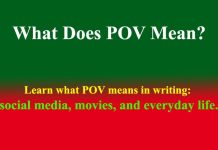How to Read Literature Like a Professor
How to Read Literature Like a Professor
How to Read Literature Like a Professor
Introduction:
“How to Read Literature Like a Professor” is a book written by Thomas C. Foster, aimed at helping readers develop a deeper understanding of literature by uncovering hidden meanings, patterns, and symbols within texts. Here’s a brief overview of the key concepts from the book:
Recognizing Patterns:
Foster emphasizes the importance of recognizing patterns and recurring themes in literature. By identifying common motifs, symbols, and narrative structures, readers can uncover deeper meanings and connections within a text.
Understanding Symbolism:
The book explores the significance of symbols in literature. Foster encourages readers to be attentive to recurring symbols and metaphors, as they often carry symbolic weight that adds layers of meaning to the narrative.
Considering Archetypes:
Foster discusses the use of archetypes—universal symbols or character types that appear across different cultures and time periods. Recognizing archetypal characters and situations helps readers uncover the underlying meanings and cultural connections in literature.
Interpreting Titles:
Foster suggests paying attention to the titles of literary works, as they often provide clues to the themes and messages within the text. Titles can be more than mere labels; they can offer insights into the author’s intentions.
Examining Weather and Seasons:
The book explores how weather and seasons can be used symbolically in literature. Foster discusses how authors often employ elements of nature to reflect or foreshadow events in the narrative.
Identifying Motifs:
Motifs are recurring elements or ideas within a work of literature. Recognizing motifs helps readers track the development of themes and understand the author’s intentions more fully.
Analyzing Character Development:
Foster delves into the importance of character development. Characters often undergo transformations, and understanding these changes contributes to a richer interpretation of the text.
Considering Intertextuality:
Intertextuality refers to the way one text can reference or draw upon another. Foster encourages readers to be aware of literary allusions, as they can enhance the understanding of a work by connecting it to a broader literary context.
Exploring Irony:
Foster discusses the various forms of irony in literature, from situational irony to dramatic irony. Recognizing irony adds depth to the reading experience and helps readers appreciate the complexities of the narrative.
Questioning Narrators:
The book encourages readers to question the reliability and perspective of narrators. Different narrative voices can influence the interpretation of events and characters within a story.
Conclusion:
Thomas C. Foster’s “How to Read Literature Like a Professor” offers readers a guide to unlocking the hidden meanings and nuances within literary works. By applying these principles, readers can develop a more insightful and enriched understanding of literature. 0 0 0.
How to Read Literature Like a Professor
Some More Queries for Ready Reference:
- Prose in Literature
- Foreshadowing Definition Literature
- Literature Review Outline
- Literature Review Sample
- Mood in Literature
- Pathos Definition Literature
- How to Write a Literature Review
- Theme Definition Literature
- Adult Content in Literature
- Erotic Literature
- Exposition Definition Literature
- Theme in Literature
- Literature Definition
- Logos Definition Literature
- Doki Doki Literature Club Characters
- Yuri Doki Doki Literature Club
- What are 2 Main Genres of Literature?
- What are the 4 Major Parts of Literature?
- What are the 2 major Types of Literature?
- What are the 3 Types of Literature?
- What is 5 definitions of literature?
- What is Literature in 150 Words
- What is a Literary Short Answer?
- What is the definition of literature?











